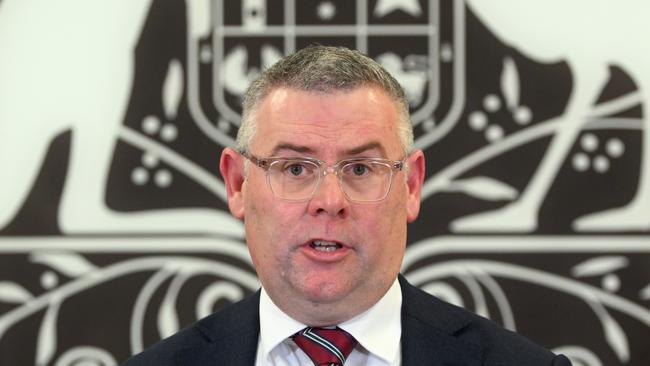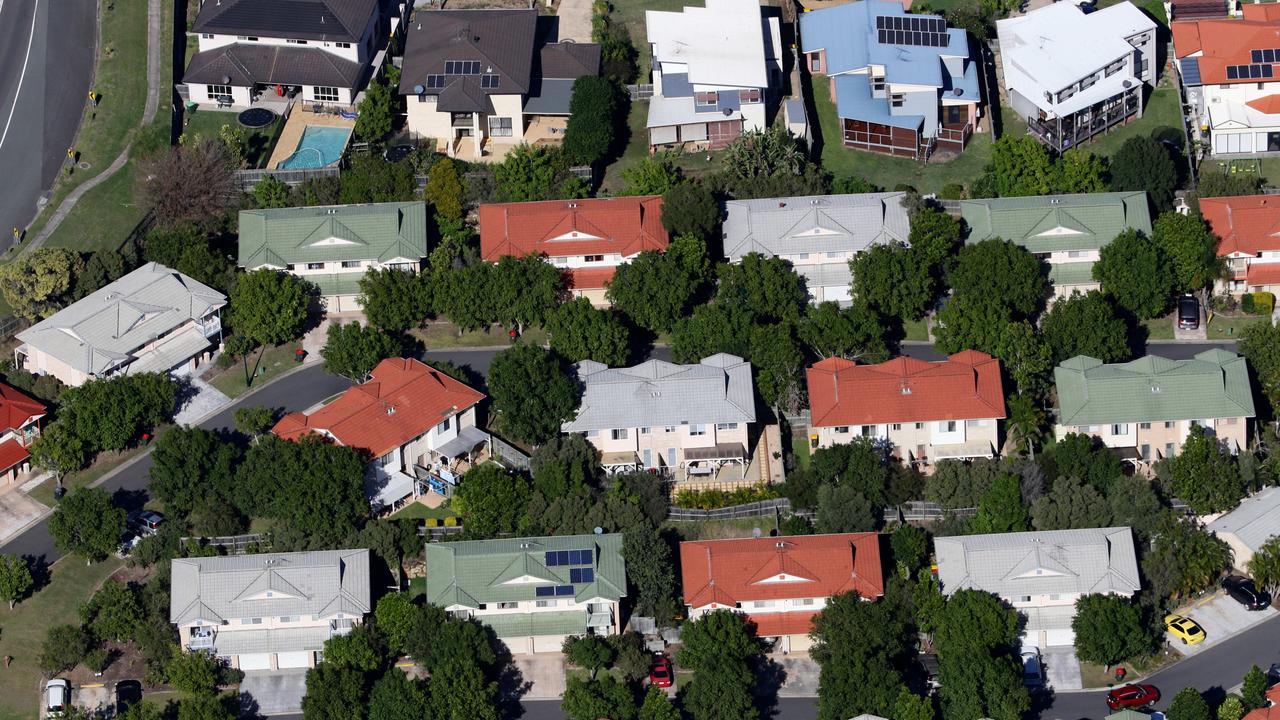Federal Budget 2023: The decision which will see even more towers built on Coast
Developers have revealed what they really think about a new plan which will dramatically transform the Gold Coast’s skyline and house our rapidly growing population.

Property
Don't miss out on the headlines from Property. Followed categories will be added to My News.
Developers will be offered massive tax breaks by the federal government to build rentable housing in a move to take pressure off the Gold Coast’s housing crisis.
Federal Treasurer Jim Chalmers brought down his second budget on Tuesday night, announcing the first budget surplus in 15 years amid worsening global economic conditions.
The housing policy, a key plank of the budget, will have a significant impact on the Gold Coast’s severe housing shortage which has seen remaining land at a premium and driving up prices.

The policy will see cuts to the managed investment trust withholding tax from 30 to 15 per cent for developers to pitch and create build-to-rent projects.
The move has been welcomed by property and development figures who say it is critical to the city dealing with its housing crisis.
CBRE Gold Coast boss Mark Witheriff said the policy would have a spill-over effect on other industries.

“We have a genuine rental crisis here on the Coast and the only way we are getting out of it is through the delivery of rental accommodation and this policy is set up to do that,” he said.
‘This is a welcome announcement and it will be great to see the government come to the party with incentives which are the only way out of the current rental crisis within a reasonable time frame.
“This will also be good for the influx of foreign workers which will come in to work in the hospitality and professional services whom we currently don’t have accommodation for.”

Developer Ron Bakir, whose company Homecorp is delivering a build-to-rent project in Varsity Lakes, welcomed the news.
“This is a great initiative and will definitely entice institutions to enter that space which will help us deliver more housing to the market,” he said.
“It has the potential to unlock a new section of the market, though we still have to navigate the issues of construction and delivery.”
Real Estate Institute of Queensland (REIQ) Gold Coast boss Andrew Henderson said there would be strong long-term benefits for the sector.

Meanwhile the policy will also see an increase in the maximum rates of Commonwealth rent assistance by 15 per cent, giving an extra $31 a fortnight to renters in the private market. Dr Chalmers said the latter was the largest increase in more than 30 years.
“For too long, secure, affordable housing has been out of reach for too many Australians,” he said.
“But we know an essential part of the solution to pressures in the housing market is more homes for Australians.
“We want more Australians to know the security of a roof over their head – which is why we’re also working with the states and territories to improve planning, build more houses and deliver a better deal for renters.”
Dr Chalmers also cited the $10 billion Housing Australia Future Fund which was announced in the government’s inaugural budget in October 2022.
Among the big winners of this policy will be Meriton boss Harry Triguboff, whose Gold Coast projects are largely build-to-rent.

New data released in March revealed Gold Coast renters had copped the highest increases in the state over the previous year.
Surfers Paradise was the worst-affected, with tenants there paying an average of $1475 a week while Paradise Point residents spend $1275 a week, a jump of 50 per cent on 2022. The city’s rental vacancy levels fell to a historic low of 0.9 per cent.
Gold Coast-based Labor Senator Murray Watt said the budget would “tackle the immediate cost of living challenges that Gold Coasters are facing, while also improving quality of life through key infrastructure projects, and better access to health care”.
“Gold Coasters will benefit from energy price relief, cheaper medicines, cheaper childcare, as well as targeted support for single parents, jobseekers and renters on pensions and payments,” he said.
“We will establish a new urgent care clinic on the Gold Coast and families will get better access to GPs, through our commitment to triple bulk-billing incentives.

“We’re also introducing new tax breaks for small businesses, and reaffirming our commitment to major infrastructure programs including stage 3 of the light rail and development of the Brisbane Arena ahead of the 2032 Olympics.”
The budget contained no funding for critical 2032 Olympic Games transport projects including Stage 4 of the light rail between Burleigh Heads and the border, or the heavy rail extension from Varsity Lakes to Gold Coast Airport or the Coomera Connector’s future stages.
However, Gold Coast Airport will receive a one off investment of $4 million under the Air Transport Program. Investments under the program is expected to ensure the aviation industry “operates within a clear and robust regulatory framework”, that international and domestic air services remain competitive and improves access to regional and remote areas.
And in a win for tens of thousands of small business operators across the city, Dr Chalmers announced a surprise continuation of the $20,000 instant asset write-off which was expected to end on June 30.
Dr Chalmers announced a $4 billion budget surplus, the first since Wayne Swan’s inaugural effort in 2008.

However, the Treasurer flagged this would likely be a one-off, with forward estimates showing a $13.9bn deficit in 2023-24 and $36.5bn the following year before “lower deficits across the forward years compared to recent budgets”
Dr Chalmers cited Labor’s “firm commitment to responsibility and restraint” for the surprise surplus but blamed tough global economic headwinds for the declining fiscal position in coming years.
“The global economy is slowing due to persistent inflation, higher interest rates and financial sector strains.
Outside of the pandemic and the Global Financial Crisis, the next two years are expected to be the weakest for global growth in over 2 decades … this will affect us here in Australia,” he said.
“Our economic growth is expected to slow from 3 ¼ per cent in 2022–23 to 1 ½ per cent the year after, before recovering to 2 ¼ per cent in the next.”
Gross debt will peak in 2025-26 at 35.6 per cent of gross national product (GDP) when it will top $1 trillion.

This, Dr Chalmers said, was $154 billion less than anticipated in the March 2022 budget, the last to be delivered by the Coalition before the federal election. Dr Chalmers used his speech to frame the budget as targeted spending on key projects which would not add to inflation
“In all our decisions, we seek to strike a considered, methodical balance,” he said.
“Between spending restraint to keep the pressure off inflation, while doing what we can to help people struggling to make ends meet.
“Making sure vital services like Medicare and the National Disability Insurance Scheme are secure, reliable and sustainable and dealing with immediate, near-term challenges – while investing in our long-term national success.”
Other key points of the budget which were announced in the lead-up include a $14.6 billion cost of living plan which will include $3 billion in direct energy bill relief for households, with $500 deducted from charges for 5 million eligible households.

Other measures included a $2.2 billion fund to increase access to pharmaceutical products, allowing people with chronic conditions to get two-months’ worth of supply for 300 different medicines, saving them $180 annually.
Meanwhile, Queenslanders should expect a $40 per fortnight increase for JobSeeker, Youth Allowance and Austudy recipients, as well as an extension to the single parent payment so it will be available until their youngest child turns 14 rather than eight.
More Coverage
Originally published as Federal Budget 2023: The decision which will see even more towers built on Coast




